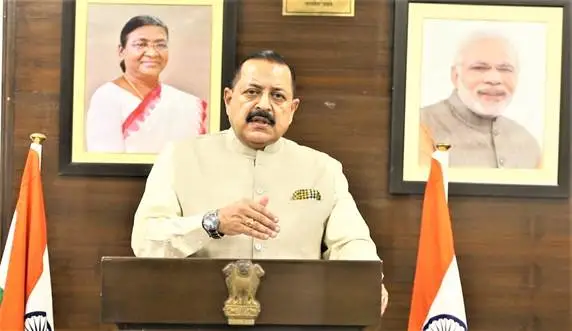Studies initiated by M/o Earth Sciences through NCCR to monitor the temporal and spatial distribution of marine litter along the Indian coasts
New Delhi: Union Minister of State (Independent Charge) Science & Technology, M/o Earth Sciences; MoS PMO, Personnel, Public Grievances, Pensions, Atomic Energy and Space, Dr Jitendra Singh said that several studies have been initiated by Ministry of Earth Sciences through its attached
office National Centre for Coastal Research (NCCR), to monitor the temporal and spatial distribution of marine litter along the Indian coasts and adjacent seas and map the distribution of marine litter.
In a written reply to a question in Rajya Sabha today, Dr. Jitendra Singh mentioned the steps that have been initiated for the formulation of the National Marine Litter Policy, like, the Ministry of Environment, Forest & Climate Change (MoEF&CC) has notified Plastic Waste Management Rules, 2016, and its amendments, which provide the statutory framework for plastic waste management in the country. The Plastic Waste Management (PWM) Rules, 2016, prohibits manufacture, import, stocking, distribution, sale and use of carry bags and plastic sheets less than fifty microns in thickness in the country. There is complete ban on sachets using plastic material used for storing, packing or selling gutkha, tobacco and pan masala. MoEF&CC had also issued Gazette notification on “Guidelines on Extended producer responsibility for Plastic Packaging” and Plastic Waste Management (Amendment) rules, 2022 on 16th February to all States/UTs and Ministries. Further, the Government of India has initiated several programmes such as “Swachh Bharat Abhiyan”, National Mission for Clean Ganga and Smart Cities Mission” in order to develop clean and sustainable environment which contribute towards the Marine Litter Policy.
Dr. Singh said that the National Centre for Coastal Research (NCCR), an attached office of MoES Conducted studies on quantifying the litter (mainly meso, macro and microplastics) in surface water and sediment from the shelf region of east coast of India. Samples from coastal water, beach and offshore sediment, and biota are analyzed for micro/ meso/ macro plastics pollution. An increase in the abundance of microplastics is observed along the east coast during the monsoon. The sampling stations nearer to the river mouth had higher numbers of microplastics concentrations. The Beach litter survey revealed that the maximum accumulation occurs in the backshore than in the intertidal zone. The results were published in the peer reviewed journal and accessible to the public.

